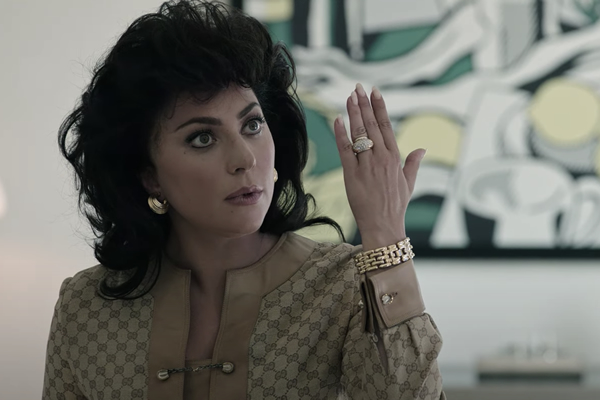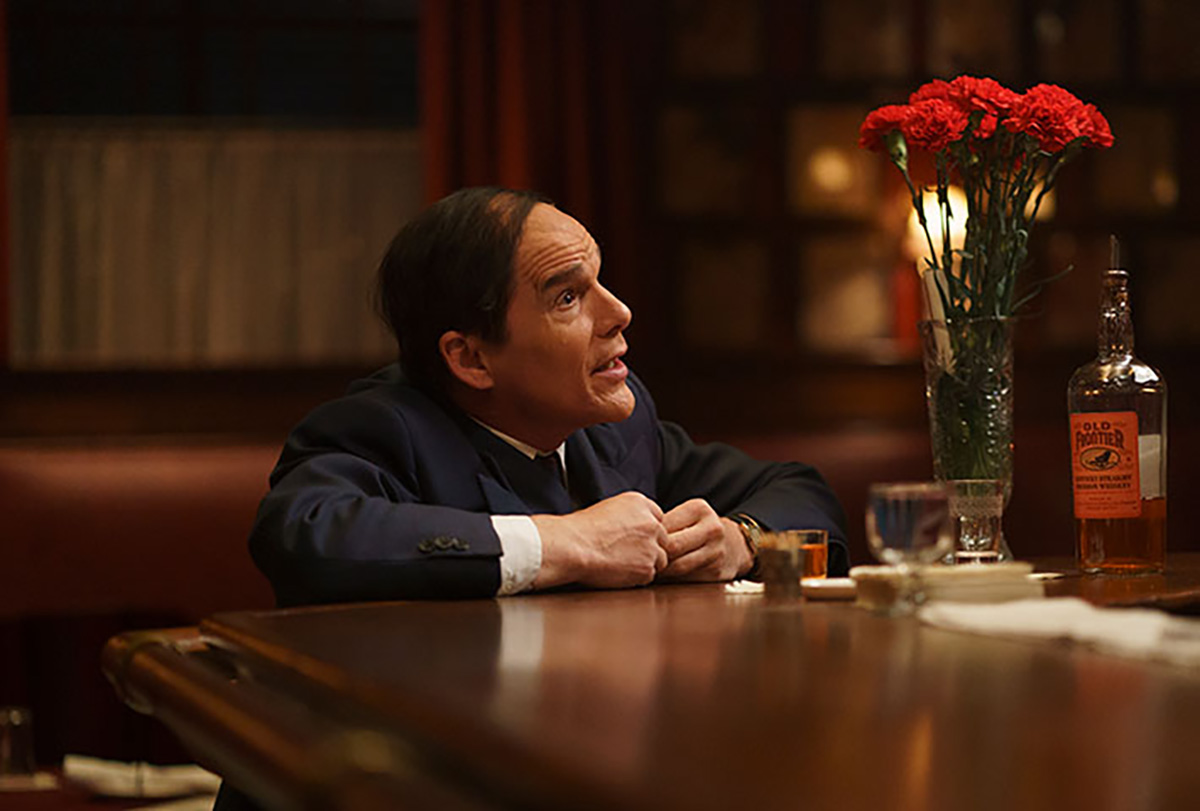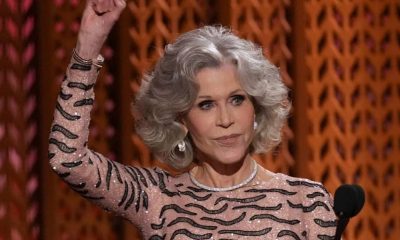Movies
SAG Award slate points to a not-very-queer Oscar night
‘Power of the Dog’ snubbed in Best Cast category

It’s mid-January, and pandemic or not, Hollywood’s “awards season” has kicked off in earnest.
The announcement last week of nominations for the 28th Annual Screen Actors Guild Awards means that it’s now time for armchair pundits, bookmakers, and film journalists to start compiling their predictions for the Oscars, which everyone knows are the main event when it comes to Hollywood awards.
This should be a good-natured exercise in fun, driven by a love for the movies and a genuine appreciation of the artistry of the people who make them – but at a time when the film industry is under deep scrutiny for diversity and inclusion, things can get complicated.
Since they are decided by members of a union that also makes up a substantial portion of the Academy’s voting body, the SAG Awards are considered a reliable bellwether for the Oscars race, though with fewer categories than the Academy, not to mention the complex interplay of personal loyalties and working relationships that undoubtedly influence their choices, they still leave room for a lot of speculation. Still, their record for aligning with the Academy’s eventual choices makes it worth factoring them in as we attempt to assess the chances for our favorite contenders to earn Oscar gold.
For Blade readers, of course, the key question is likely to be about which of the year’s LGBTQ movies are going to snag wins. Unfortunately, the answer to that question might be pretty bleak.
Of the 22 titles nominated within the SAG Awards’ six film categories, only one – “The Power of the Dog” – could be said to have any significant queer content. Others, like “West Side Story”, “tick, tick… BOOM!”, “The Eyes of Tammy Faye”, “Being the Ricardos”, or “House of Gucci”, have either LGBTQ-relevant elements in their narratives or obvious LGBTQ appeal in their subject matter, and some have both. But there is no “Moonlight” or “Call Me By Your Name” on which to hang the hope of a definitively queer winner in any category.
In the Best Performance by a Cast in a Motion Picture race – which is essentially the SAG Awards’ equivalent of Best Picture – the biggest surprise is the omission of “Power of the Dog.” Filmmaker Jane Campion’s dark and subtle western about the toxic relationship between a domineering older rancher and his effeminate new nephew has been a fixture in the top categories at awards ceremonies so far, but despite earning nods in other categories, it was shut out of the competition for this one. That leaves little in the way of LGBTQ inclusion among the five nominees (“Belfast”, “CODA”, “Don’t Look Up”, “House of Gucci”, “King Richard”), but it doesn’t keep “Power” from being a front-runner at the Oscars, where the Best Picture category can include up to 10 contenders. Even if all five of the SAG choices make it into the Academy’s race, Campion’s movie is almost certainly going to be there, too. The same can probably be said of “West Side Story”, another presumptive front-runner, but given its track record of wins so far, “Power” still stands as our favorite to take the honor on Oscar night.
For Best Performance by a Female Actor in a Motion Picture, the lineup includes several films of LGBTQ interest. “The Eyes of Tammy Faye,” which earned a nod for star Jessica Chastain, is a biopic that takes time to address its real-life protagonist’s surprising legacy as a queer ally; “Being the Ricardos,” though it contains no directly LGBTQ material, has the obvious appeal of focusing on Lucille Ball, a show biz icon beloved for decades by the gay community, who is portrayed with delicacy and respect by nominee Nicole Kidman; Jennifer Hudson’s star turn as Aretha Franklin – another legendary diva with queer appeal – snagged her a nomination for “Respect”; and finally, Ridley Scott’s “House of Gucci” grabbed another nod here for Lady Gaga, the only out member of the LGBTQ community in the running. It would be great to see Mother Monster take home this prize, but she’s got stiff competition; based on honors given out so far, she stands as a frontrunner, but with Hudson and Kidman in the mix, not to mention awards darling Olivia Colman (nominated for “The Lost Daughter”), it feels like anybody’s race. Win or lose at the SAGs, Gaga still has a strong chance of being included in Oscar’s Best Actress category – as does out actress Kristin Stewart, whose performance as Lady Diana in “Spencer” puts her solidly on the Oscar shortlist, despite being snubbed here.
Best Performance by a Male Actor in a Motion Picture might also be wide open. A few weeks ago, Benedict Cumberbatch would likely be the clear favorite to win for his towering performance as the closeted rancher in “Power of the Dog”, but after fellow nominee Will Smith’s win at the Golden Globes for “King Richard” his chances seem less sure. It’s a category that includes two Black actors – Smith and Denzel Washington (“The Tragedy of Macbeth”) – and on a slate that is otherwise dominated by white nominees it’s one of the few opportunities for the SAGs to diversify its winners’ circle. It’s also worth mentioning that Andrew Garfield, nominated for “tick, tick… BOOM!”, won the Globes prize for Best Actor in a Comedy or Musical, which combined with widespread acclaim for his performance makes him a strong contender to pull off an upset from either of the two frontrunners – a scenario likely to be repeated at the Academy Awards. In any case, Washington and Javier Bardem (nominated for playing Desi Arnaz in “Being the Ricardos”) are probably the dark horses here.
In the supporting categories, things look even less promising for LGBTQ inclusion. Nominated for “West Side Story” is Ariana DeBose, who is the clear favorite to win as Female Actor, though Kirsten Dunst’s quietly devastating performance in “Power of the Dog” has been accumulating considerable buzz, too. Both will likely be included at the Oscars as well. On the Male Actor side, the most clearly queer-friendly choice is Kodi Smit-McPhee, also for “Power of the Dog”; it’s a wild card category, skewed by the presence of big names (Ben Affleck and Bradley Cooper, nominated for “The Tender Bar” and “Licorice Pizza”, respectively) who might gain votes on the basis of star status alone, but Smit-McPhee has made a consistently strong showing throughout the awards race so far – and frankly, deserves to win just for his ability to hold his own opposite the charismatic Cumberbatch. He’s our favorite in the category not just here, but also on Oscar night.
The SAG Awards, of course, also present awards for television. Those don’t have much bearing on the Oscars, but it’s worth mentioning that the nominees there include LGBTQ-relevant favorites like “The Handmaid’s Tale”, “Succession”, “Hacks”, “The White Lotus”, and “Halston.” We’ll take a closer look at those when the Screen Actors Guild makes their presentation, which will air live on TNT and TBS, on Sunday, Feb. 27.
Meanwhile, it’s time to start working on those Oscar predictions. Ready, set… GO!
Movies
Superb direction, performances create a ‘Day’ to remember
A rich cinematic tapestry with deep observations about art, life, friendship

According to writer/director Ira Sachs, “Peter Hujar’s Day” is “a film about what it is to be an artist among artists in a city where no one was making any money.” At least, that’s what Sachs – an Indie filmmaker who has been exploring his identities as both a gay and Jewish man onscreen since his 1997 debut effort, “The Delta” – told IndieWire, with tongue no doubt firmly planted in cheek, in an interview last year.
Certainly, money is a concern in his latest effort – which re-enacts a 1974 interview between photographer Peter Hujar (Ben Whishaw) and writer Linda Rosenkrantz (Rebecca Hall), as part of an intended book documenting artists over a single 24-hour period in their lives – and is much on the mind of its titular character as he dutifully (and with meticulous detail) recounts the events of his previous day during the course of the movie. To say it is the whole point, though, is clearly an overstatement. Indeed, hearing discussions today of prices from 1974 – when the notion of paying more than $7 for Chinese takeout in New York City seemed outrageous – might almost be described as little more than comic relief.
Adapted from a real-life interview with Hujar, which Rosenkrantz published as a stand-alone piece in 2021 (her intended book had been abandoned) after a transcript was discovered in the late photographer’s archives, “Peter Hujar’s Day” inevitably delivers insights on its subject – a deeply influential figure in New York culture of the seventies and eighties, who would go on to document the scourge of AIDS until he died from it himself, in 1987. There’s no plot, really, except for the recalled narrative itself, which involves an early meeting with a French journalist who is picking up Hujar’s images of model Lauren Hutton, an afternoon photo shoot with iconic queer “Beat Generation” poet/activist Allen Ginsburg, and an evening of mundane social interaction over the aforementioned Chinese food. Yet it’s through this formalized structure – the agreed-upon relation of a sequence of events, with the thoughts, observations, and reflections that come with them – that the true substance shines through.
In relaying his narrative, Hujar exhibits the kind of uncompromising – and slavishly precise – devotion to detail that also informed his work as a photographer; a mundane chronology of events reveals a universe of thought, perception, and philosophy of which most of us might be unaware while they were happening. Yet he and Rosenkrantz (at least in Sachs’ reconstruction of their conversation) are both artists who are keenly aware of such things; after all, it’s this glimpse of an “inner life” of which we are rarely cognizant in the moment that was/is their stock-in-trade. It’s the stuff we don’t think of while we’re living our lives – the associations, the judgments, the selective importance with which we assign each aspect of our experiences – that later becomes a window into our souls, if we take the opportunity to look through it. And while the revelations that come may occasionally paint them in a less-than-idealized light (especially Hujar, whose preoccupations with status, reputation, appearances, and yes, money, often emerge as he discusses the encounter with Ginsberg and his other interactions), they never feel like definitive interpretations of character; rather, they’re just fleeting moments among all the others, temporary reflections in the ever-ongoing evolution of a lifetime.
Needless to say, perhaps, “Peter Hujar’s Day” is not the kind of movie that will be a crowd-pleaser for everyone. Like Louis Malle’s equally acclaimed-and-notorious “My Dinner With Andre” from 1981, it’s essentially an action-free narrative comprised entirely of a conversation between two people; nothing really happens, per se, except for what we hear described in Hujar’s description of his day, and even that is more or less devoid of any real dramatic weight. But for those with the taste for such an intellectual exercise, it’s a rich and complex cinematic tapestry that rewards our patience with a trove of deep observations about art, life, and friendship – indeed, while its focus is ostensibly on Hujar’s “day,” the deep and intimate love between he and Rosenkrantz underscores everything that we see, arguably landing with a much deeper resonance than anything that is ever spoken out loud during the course of the film – and never permits our attention to flag for even a moment.
Shooting his movie in a deliberately self-referential style, Sachs weaves the cinematic process of recreating the interview into the recreation itself, bridging mediums and blurring lines of reality to create a filmed meditation that mirrors the inherent artifice of Rosenkrantz’s original concept, yet honors the material’s nearly slavish devotion to the mundane minutiae that makes up daily life, even for artists. This is especially true for both Hujar and Rosenkrantz, whose work hinges so directly to the experience of the moment – in photography, the entire end product is tied to the immediacy of a single, captured fragment of existence, and it is no less so for a writer attempting to create a portrait (of sorts) composed entirely of fleeting words and memories. Such intangibles can often feel remote or even superficial without further reflection, and the fact that Sachs is able to reveal a deeper world beyond that surface speaks volumes to his own abilities as an artist, which he deploys with a sure hand to turn a potentially stagnant 75 minutes of film into something hypnotic.
Of course, he could not accomplish that feat without his actors. Whishaw, who has proven his gifts and versatility in an array of film work including not only “art films” like this one but roles from the voice of Paddington Bear to “Q” in the Daniel Craig-led “James Bond” films, delivers a stunning performance, carrying at least 75% of the film’s dialogue with the same kind of casual, in-the-moment authenticity as one might expect at a dinner party with friends; and though Hall has less speaking to do, she makes up for it in sheer presence, lending a palpable sense of respect, love, and adoration to Rosenkrantz’s relationship with Hujar.
In fact, by the time the final credits role, it’s that relationship that arguably leaves the deepest impression on us; though these two people converse about the “hoi polloi” of New York, dropping legendary names and reminding us with every word of their importance in the interwoven cultural landscape of their era, it’s the tangible, intimate friendship they share that sticks with us, and ultimately feels more important than any of the rest of it. For all its trappings of artistic style, form, and retrospective cultural commentary, it’s this simple, deeply human element that seems to matter the most – and that’s why it all works, in the end. None of its insights or observations would land without that simple-but-crucial link to humanity.
Fortunately, its director and stars understand this perfectly, and that’s why “Peter Hujar’s Day” has an appeal that transcends its rarified portrait of time, place, and personality. It recognizes that it’s what can be read between the lines of our lives that matters, and that’s an insight that’s often lost in the whirlwind of our quotidian existence.
Movies
Queer Broadway icon gets stellar biopic treatment in ‘Blue Moon’
Ethan Hawke delivers award-worthy performance as Lorenz Hart

Even if you’ve never heard the name Lorenz Hart, chances are high you’ve heard some of his songs.
A giant of early 20th century Broadway songwriting, he was a lyricist whose complex blend of wit and wistful romanticism – mostly set to music by longtime composing partner Richard Rodgers – became a significant part of the “Great American Songbook,” performed and recorded by countless musical artists in the decades since. Yet despite his success, happiness eluded him; depression and alcoholism eventually hobbled his career, and he died in 1943 – aged only 47 – from a case of pneumonia he caught after passing out in the rain in front of his favorite bar.
His tragic story might seem an odd fit for a screen treatment from maverick director Richard Linklater, but his latest film – “Blue Moon” in theaters as of Oct. 24 – delivers exactly that. It crafts a mostly speculative and highly stylized portrait of Hart (portrayed in a tour-de-force by longtime Linklater muse Ethan Hawke) on a night that was arguably the lowest point in his professional career: the opening night of “Oklahoma!” – the soon-to-be smash hit composed by Rodgers (Andrew Scott) with new partner Oscar Hammerstein III (Simon Delaney) after their two-decade partnership had been tanked by his personal struggles.
In Robert Kaplow’s theatrically crafted screenplay, Hart shows up early for the post-opening celebration – held, of course, at Broadway’s legendary meeting place, Sardi’s – to hold court with the bartender (Bobby Cannavale) and a young hired piano player (Jonah Lees) while steeling his nerves with a few shots of the whiskey he has sworn to avoid. He’s not there to support his old colleague, however; there’s too much resentment swirling inside him for that. Rather, he’s there to connect with 20-year-old college student Elizabeth (Margaret Qualley), whom he has taken on as a protege – and with whom he has convinced himself he is in love, despite the homosexual inclinations that are mostly an “open secret” within his circle of Broadway insiders.
Constructed as a real-time narrative that follows Hart over the course of the evening, Kaplow’s script could almost be described as a monologue – with interruptions, of course – by the songsmith himself; aided by Hawke’s fearlessly unsentimental performance, the film’s presentation of Hart – a queer man grappling with his own self-loathing in a deeply homophobic era – is almost brutal in its exploration of his emotional and psychological landscape. He has walked a thin line for most of his life, alternately hiding and flaunting his inner truth for decades to navigate his world, and the strain has taken its toll; once heralded as one of Broadway’s brightest talents, his reputation has been ravaged by rumor, and he occupies his time by escaping his loneliness through self-denial and liquor. He’s become that guy at the bar who regales you with larger-than-life stories while peppering them with barely concealed bitterness and regret; you can’t help but feel empathy for him, but you’d love to politely extract yourself from the situation at the first opportunity.
There’s something relatable about that situation – from both perspectives – and that’s what keeps “Blue Moon” from becoming insufferable. It’s the kind of movie that makes us cringe, not over the pathetic behavior of its leading character but in anticipation of the next uncomfortable development that’s sure to come as a consequence. He’s a seasoned raconteur, with a polished wit and a prodigious skill with language, and we find ourselves pulling for him both in spite and because of the sense of manic desperation we can feel behind his words.
It’s that almost-grudging empathy we feel for him that gives “Blue Moon” a sense of humanity in the face of what might otherwise seem a relentlessly bleak character study, and keeps us from judging Hart’s impulses toward self-delusion and self-destruction too harshly; and in the end, Linklater’s biopic leaves us with a perspective on his life that emphasizes the legacy he left behind – the poignant lyrics that bespoke an unfulfillable longing for love and connection – and the lasting influence he cast over the generations that succeeded him.
To underscore the latter, the movie imagines a few fortuitous encounters during the festivities at Sardi’s, in which Hart unknowingly drops nuggets of inspiration for such future icons as author E.B. White and a very young Stephen Sondheim. The meetings may or may not not be flights of fancy, but they convey the lasting impact of Hart’s creative contributions in a way that not only feels truthful in spirit but provides some amusing “Easter Egg” moments for buffs of Golden Age Broadway-and-Hollywood lore.
In fact, it should be said that “Blue Moon,” despite the underlying melancholy and the squirm-in-your-seat discomfort that hovers around its edges, is a thoroughly entertaining film; constructed like a play, shot in a style that evokes the cinema of the era (with ongoing references to “Casablanca” to underscore the connection), and wrapped in the nostalgic glow of old Manhattan in its elegant heyday, it bubbles with the kind of wryly sophisticated humor that marked so much of Hart’s own work and thrills us with the feelings it sparks within us as it goes.
For that, we must again point to Hawke’s award-worthy performance as the core element; though he accomplishes a physical transformation into the short-and-balding Hart, and masterfully captures his flamboyant personality, it’s the actor’s understanding of the songwriter’s inner landscape that gives the movie its heart, soul, and painfully human perspective.
Even so, it’s a movie with an entire cast’s worth of superb performances. There’s Scott’s carefully measured Rodgers, balancing genuine friendship with the frustrated impatience of navigating a strained relationship in public. Qualley walks a similar tightrope as the object of Hart’s misguided affections, charming us with authentic fondness and diplomatic compassion, and Cannavale provides a solid ground of streetwise wisdom as the bartender who might be his best friend. Patrick Kennedy’s E.B. White, bringing a welcome note of respect and insight, is also a standout.
Yet while the acting in “Blue Moon” may be excellent across the board, it’s Linklater’s direction that drives his cast’s work and ties it all together; a proven chameleon behind the camera, he embraces the theatrical structure of the screenplay with a perfectionist’s aesthetic, and indulges his fascination with time by encapsulating the portrait of a man’s entire life into the observations that can be gleaned from a single night. More importantly, perhaps, he honors his subject by refusing to define Hart’s sexuality to fit modern sensibilities. We can draw whatever conclusions we want, but in the end we have no reason to reject the songwriter’s description of himself as “ambi-sexual” – even though, with its undercurrent of jealousy between two ex-partners, it’s hard not to take note of some very gay implied subtext.
In the end, Hart’s sexual “label” is irrelevant; his loneliness is what matters, the longing to love – and to be loved – which we all share, regardless of our sexual makeup.
It’s the tragic beauty of that universal pang that comes through in all of the timeless lyrics that Lorenz Hart wrote, and it comes through in Linklater’s excellent movie, too.
Movies
Romero throws queer twist on father’s legacy with ‘Queens of the Dead’
Drag queens, trans women, femme boys, butch girls battling zombies

It may be hard to believe, but once upon a time, there weren’t really a lot of zombie movies.
Sure, zombies turned up from time to time during the classic era of horror movies, but in those days they were typically only the mindless slaves of a sinister master who has taken control of their consciousness and their will by means of arcane magic – a conception largely invented from racist tropes derived from the misinterpreted voodoo lore of Haiti and other colonized cultures of the Caribbean. These early zombies were not evil in themselves; they chased you because they were following orders, not because they wanted to eat your brains, and they were usually less scary than they were pitiable.
As any fan of horror knows, all that changed in 1968. That was the year that George A. Romero rewrote the playbook on zombies with his low-budget masterpiece, “Night of the Living Dead.” Gone were the shambling mind-controlled somnambulists that once defined them in the popular imagination, replaced instead with relentless walking corpses driven not by voodoo but by a primal and insatiable instinct to devour our flesh, and – perhaps worse – turn us into creatures just like them in the process.
Ever since then, the zombie subgenre has been a perennially popular staple of horror cinema, both through the sequels Romero himself would go on to create and the plentiful imitations and appropriations of generations of filmmakers inspired by him, and – like the creatures that inhabit it – just seems to keep going. Zombies are now a seemingly permanent fixture in our pop entertainment culture; indeed, there are so many movies and TV shows (and spinoffs) revolving around them that it’s easy to let a new one slip by without taking notice.
With “Queens of the Dead,” however, notice should be taken – because while there may be a lot of zombie movies out there already, this one comes from the daughter of the man who reinvented them, and with it, she puts her own unique mark on the family legacy.
A wild and campy ride through the nocturnal world of Brooklyn, Tina Romero’s “zom-com” centers on a group of drag queens and queer club kids in Brooklyn as they prepare for a massive warehouse party. Things are not going smoothly; mere hours ahead of showtime, show producer Dre (Katy O’Brian) is informed that the headliner, a social media-famous drag queen named Yasmine (Dominique Jackson), has cancelled, and the only possibility for a replacement is Sam (Jaquel Spivey) aka “Samonce” – who hasn’t performed since running out on her own sold-out show, years ago. Meanwhile, in the outside world, a sudden and unexplained plague of zombies has begun to spread, with the flesh-eating undead crowd growing larger by the minute; and when the doors open for showtime, Dre and their crew of queer-and-allied cohorts find themselves forced to overcome all the bickering, backbiting, and “frenemy” rivalries between them in order to survive as the club becomes ground zero in a zombie apocalypse.
Buoyed by an exceptional ensemble cast, Romero’s audacious feature takes her late father’s original formula – an unexplained and unrelenting epidemic of undead cannibals terrorizing a group of mismatched survivors as they try to plan their escape – and spins it into an irreverent, edgy, and deeply macabre comedy which feels almost as indebted to the underground countercultural “trash” cinema of John Waters as to her father’s iconic horror masterpiece, even though it has a slicker veneer than either. At the same time, she builds real relationships between the collection of characters she gathers together, making them all relatably human while also raising the emotional stakes for the horror drama that remains in play throughout and despite the humorous framework. It’s a balancing act that could easily go wrong, but “Queens of the Dead” pulls it off with a blend that takes itself just seriously enough to keep us on edge yet never too much so to kill the fun, offering up moments of genuine horror alongside scenes of absurdist camp without either feeling out of place.
What makes Romero’s twist on her father’s iconic film – for “Queens of the Dead” feels much like a “spiritual remake” at times – especially compelling is that she manages to keep all of its formulaic integrity intact while re-expressing it through an unapologetically queer lens. The characters are drag queens, trans women, femme boys, butch girls, lesbians, and yes, even a couple of cisgender heterosexuals. It’s a true “rainbow coalition” of a cast, thrown together to combat an onslaught on their community, and looking fabulous while they do it.
Of course, it’s impossible not to also recognize the thread of social commentary that connects Romero’s film to her father’s original, which, with its Black protagonist, evoked a powerful subtext about racism and mob violence. In “Queens,” she gives us the unmistakably direct allegory of watching a band of queer outsiders forced to fight back against a horde of mindless and malevolent drones, phone-obsessed zombies staring at their screens for distraction as they search for new victims to devour. At its heart, queer horror stories are always about this: the gnawing fear of the conforming masses, swayed by the lights and color and noise of their propaganda to target and terrorize, and even though she delivers it with a healthy touch of tongue-in-cheek humor, this one carries that message with absolute clarity.
Spivey (Broadway’s “A Strange Loop”) makes for an outstanding unlikely hero/heroine, and O’Brian brings a winning, sexy swagger as Dre. Quincy Dunn-Baker makes an impact as the club’s seemingly toxic straight handyman, and in addition to Jackson’s scene-stealing performances as diva Yasmine, there’s a superb supporting turn by Margaret Cho as a militant lesbian who unleashes her fury on the zombie hordes, along with a host of other memorable performances from such familiar and talented performers as Riki Lindhome, Jack Haven, Nina West, Tomas Matos, Eve Lindley and Cheyenne Jackson.
Entertaining, smart, and surprisingly light-hearted for all its zombie carnage, “Queens of the Dead” is one of those hidden gems of a movie that has all the earmarks of a cult classic. Opening in theaters on Oct. 24, it’s our best pick as your holiday must-see for the Halloween season.
-

 District of Columbia2 days ago
District of Columbia2 days ago‘Sandwich guy’ not guilty in assault case
-

 Sports2 days ago
Sports2 days agoGay speedskater racing toward a more inclusive future in sports
-

 Celebrity News4 days ago
Celebrity News4 days agoJonathan Bailey is People’s first openly gay ‘Sexiest Man Alive’
-

 Michigan4 days ago
Michigan4 days agoFBI thwarts Halloween terror plot targeting Mich. LGBTQ bars




















